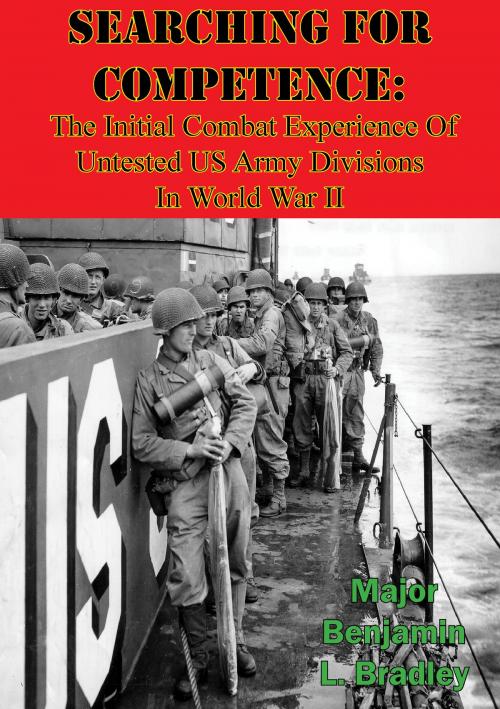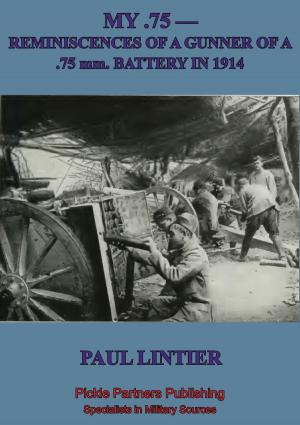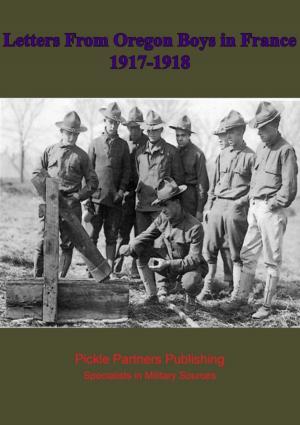Searching For Competence: The Initial Combat Experience Of Untested US Army Divisions In World War II
Nonfiction, History, Germany, European General, Military, United States| Author: | Major Benjamin L. Bradley | ISBN: | 9781786253156 |
| Publisher: | Lucknow Books | Publication: | November 6, 2015 |
| Imprint: | Lucknow Books | Language: | English |
| Author: | Major Benjamin L. Bradley |
| ISBN: | 9781786253156 |
| Publisher: | Lucknow Books |
| Publication: | November 6, 2015 |
| Imprint: | Lucknow Books |
| Language: | English |
The initial combat experience of the 90th Infantry Division in World War II demonstrates the leadership and training problems faced by many new divisions throughout the war.
Like all newly activated World War II Divisions, the 90th had a turbulent two-year training period fraught with problems of resources and personnel. During the interwar years, the Army’s readiness was allowed to stagnate below such an acceptable level that when crisis called there was little to build upon. Consequently, the larger priority of rapidly fielding 90 divisions outweighed considerations for how well those divisions were trained. Thus, the 90th Division was forced into combat by the exigencies of war with many factors working against it: untested officers, unfamiliar doctrine, limited training on advanced combat skills, and the detrimental effects of constant personnel turnover, including commanders.
As the 90th went ashore on Normandy, a period of ineffectiveness ensued as soldiers were forced to learn the lessons of training under fire and unsuccessful leaders were replaced. Furthermore, the 90th Division’s period of ineffectiveness seemed extraordinary because it occurred under the spotlight of the Normandy invasion where insufficient planning for the difficulties of hedgerow combat severely slowed the expected pace of advance. Undoubtedly, the performance of the 90th Division’s senior leadership was abysmal, but its uncoordinated attacks were the product of training deficiencies experienced by all new divisions. Additionally, critical evaluation reveals the 90th’s early contribution much higher than historically credited and far from the total failure some have labeled it.
The initial combat experience of the 90th Infantry Division in World War II demonstrates the leadership and training problems faced by many new divisions throughout the war.
Like all newly activated World War II Divisions, the 90th had a turbulent two-year training period fraught with problems of resources and personnel. During the interwar years, the Army’s readiness was allowed to stagnate below such an acceptable level that when crisis called there was little to build upon. Consequently, the larger priority of rapidly fielding 90 divisions outweighed considerations for how well those divisions were trained. Thus, the 90th Division was forced into combat by the exigencies of war with many factors working against it: untested officers, unfamiliar doctrine, limited training on advanced combat skills, and the detrimental effects of constant personnel turnover, including commanders.
As the 90th went ashore on Normandy, a period of ineffectiveness ensued as soldiers were forced to learn the lessons of training under fire and unsuccessful leaders were replaced. Furthermore, the 90th Division’s period of ineffectiveness seemed extraordinary because it occurred under the spotlight of the Normandy invasion where insufficient planning for the difficulties of hedgerow combat severely slowed the expected pace of advance. Undoubtedly, the performance of the 90th Division’s senior leadership was abysmal, but its uncoordinated attacks were the product of training deficiencies experienced by all new divisions. Additionally, critical evaluation reveals the 90th’s early contribution much higher than historically credited and far from the total failure some have labeled it.






![Cover of the book A Soldier’s Manuscript [Illustrated Edition] by Major Benjamin L. Bradley](https://www.kuoky.com/images/2014/august/300x300/9781782894810-I60d_300x.jpg)




![Cover of the book NILE TO ALEPPO: With The Light-Horse In The Middle East [Illustrated Edition] by Major Benjamin L. Bradley](https://www.kuoky.com/images/2014/august/300x300/9781782895657-U3q9_300x.jpg)


![Cover of the book Ambulance No. 10. Personal Letters Of A Driver At The Front [Illustrated Edition] by Major Benjamin L. Bradley](https://www.kuoky.com/images/2014/june/300x300/9781782891772-Oidp_300x.jpg)
